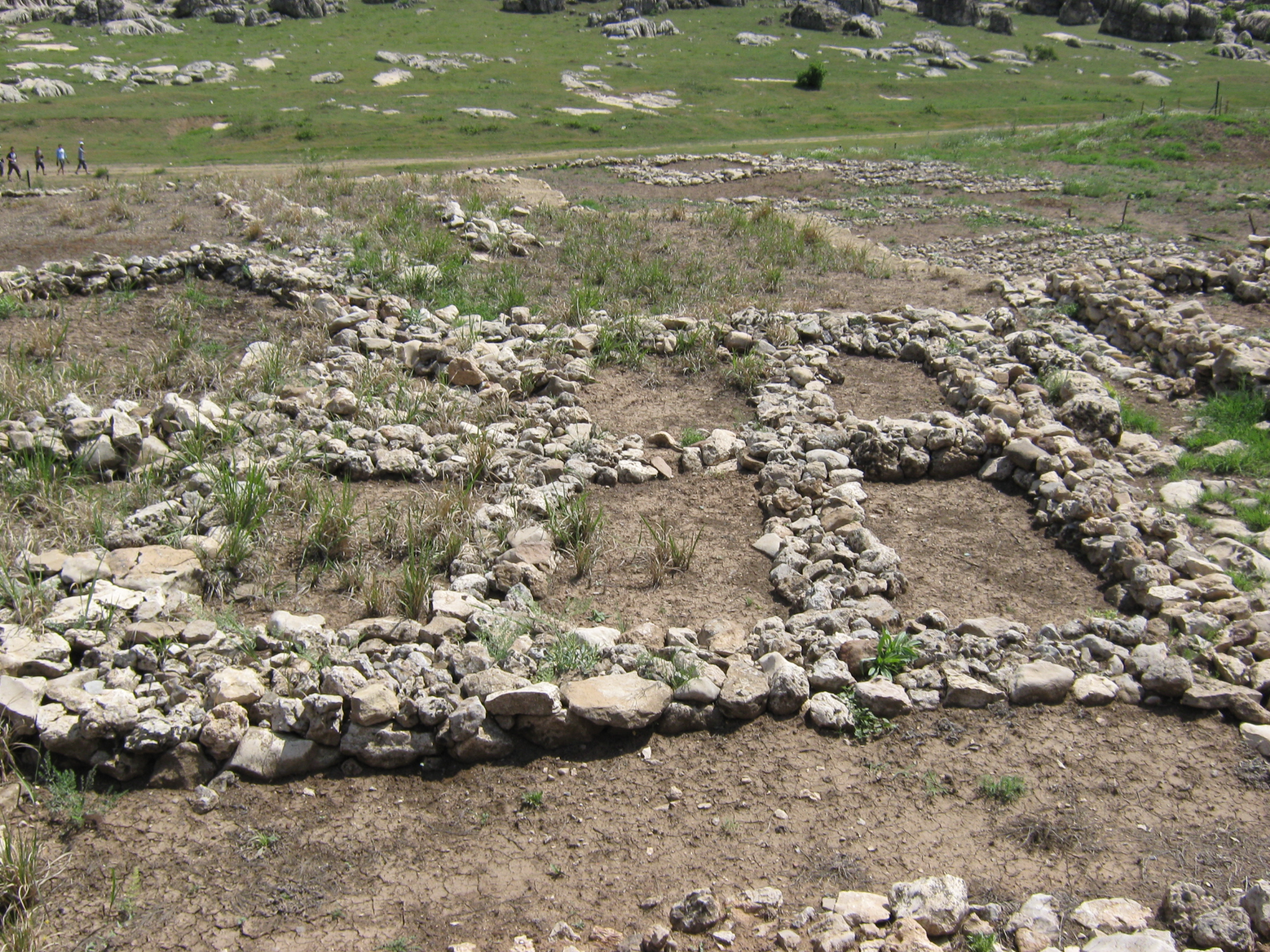Çayönü on:
[Wikipedia]
[Google]
[Amazon]
Çayönü Tepesi is a


 The site was excavated for 16 seasons between 1964 and 1991, initially by
The site was excavated for 16 seasons between 1964 and 1991, initially by
Çayönü
from About.com
from Ancient Near East Archaeological sites in Southeastern Anatolia Neolithic settlements Former populated places in Turkey Geography of Diyarbakır Province Buildings and structures in Diyarbakır Province Prehistoric Anatolia Tells (archaeology) Pre-Pottery Neolithic B Pre-Pottery Neolithic A Late Neolithic {{Turkey-archaeology-stub
Neolithic
The Neolithic period, or New Stone Age, is an Old World archaeological period and the final division of the Stone Age. It saw the Neolithic Revolution, a wide-ranging set of developments that appear to have arisen independently in several pa ...
settlement in southeastern Turkey
Turkey ( tr, Türkiye ), officially the Republic of Türkiye ( tr, Türkiye Cumhuriyeti, links=no ), is a transcontinental country located mainly on the Anatolian Peninsula in Western Asia, with a small portion on the Balkan Peninsula ...
which prospered from circa 8,630 to 6,800 BC. It is located forty kilometres north-west of Diyarbakır
Diyarbakır (; ; ; ) is the largest Kurdish-majority city in Turkey. It is the administrative center of Diyarbakır Province.
Situated around a high plateau by the banks of the Tigris river on which stands the historic Diyarbakır Fortres ...
, at the foot of the Taurus mountains. It lies near the Boğazçay, a tributary of the upper Tigris
The Tigris () is the easternmost of the two great rivers that define Mesopotamia, the other being the Euphrates. The river flows south from the mountains of the Armenian Highlands through the Syrian and Arabian Deserts, and empties into the ...
River and the Bestakot, an intermittent stream. It is an early example of agriculture
Agriculture or farming is the practice of cultivating plants and livestock. Agriculture was the key development in the rise of sedentary human civilization, whereby farming of domesticated species created food surpluses that enabled people ...
.
Archaeology


 The site was excavated for 16 seasons between 1964 and 1991, initially by
The site was excavated for 16 seasons between 1964 and 1991, initially by Robert John Braidwood
Robert John Braidwood (29 July 1907 – 15 January 2003) was an American archaeologist and anthropologist, one of the founders of scientific archaeology, and a leader in the field of Near Eastern Prehistory.
Life
Braidwood was born July 29, ...
and Halet Çambel and later by Mehmet Özdoğan and Aslı Erim Özdoğan. The settlement covers the periods of the Pre-Pottery Neolithic A
Pre-Pottery Neolithic A (PPNA) denotes the first stage of the Pre-Pottery Neolithic, in early Levantine and Anatolian Neolithic culture, dating to years ago, that is, 10,000–8,800 BCE. Archaeological remains are located in the Levantine and ...
(PPNA), the Pre-Pottery Neolithic B
Pre-Pottery Neolithic B (PPNB) is part of the Pre-Pottery Neolithic, a Neolithic culture centered in upper Mesopotamia and the Levant, dating to years ago, that is, 8800–6500 BC. It was typed by British archaeologist Kathleen Kenyon durin ...
(PPNB), and the Pottery Neolithic (PN).
The stratigraphy is divided into the following subphases according to the dominant architecture:
*round, PPNA
*grill, PPNA
*channeled, Early PPNB
*cobble paved, Middle PPNB
*cell, Late PPNB
*large room, final PPNB
An analysis of blood found at the site suggested that human sacrifice
Human sacrifice is the act of killing one or more humans as part of a ritual, which is usually intended to please or appease gods, a human ruler, an authoritative/priestly figure or spirits of dead ancestors or as a retainer sacrifice, wherei ...
occurred there.
Origin of domestication
Animal life - domestication of pigs and cattle
Çayönü is possibly the place where the pig (''Sus scrofa'') was first domesticated.Farming - cultivation of cereals
Genetic studies of emmer wheat, the precursor of most current wheat species, show that the slopes of Mount Karaca ( Karaca Dağ), which is located in close vicinity to Çayönü, was the location of first domestication. A different DNA approach pointed to Kartal Daği. Robert Braidwood wrote that "insofar as unit HA can be considered as representing all of the major pre-historic occupation at Cayonu, cultivated emmer along with cultivated einkorn was present from the earliest sub-phase."See also
*Cities of the ancient Near East
The earliest cities in history were in the ancient Near East, an area covering roughly that of the modern Middle East: its history began in the 4th millennium BC and ended, depending on the interpretation of the term, either with the conquest by ...
*Göbekli Tepe
Göbekli Tepe (, "Potbelly Hill"; known as ''Girê Mirazan'' or ''Xirabreşkê'' in Kurdish) is a Neolithic archaeological site in the Southeastern Anatolia Region of Turkey. Dated to the Pre-Pottery Neolithic, between 9500 and 8000 BCE, the ...
* Dja'de el-Mughara
Notes
External links
Çayönü
from About.com
from Ancient Near East Archaeological sites in Southeastern Anatolia Neolithic settlements Former populated places in Turkey Geography of Diyarbakır Province Buildings and structures in Diyarbakır Province Prehistoric Anatolia Tells (archaeology) Pre-Pottery Neolithic B Pre-Pottery Neolithic A Late Neolithic {{Turkey-archaeology-stub